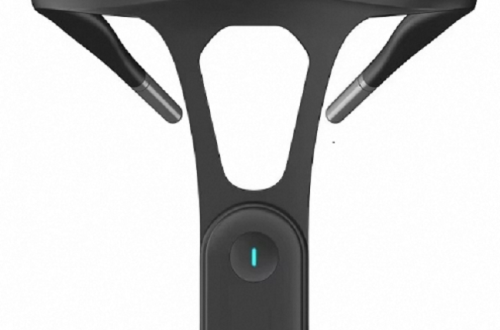I. Introduction
In addition to decluttering our physical space, it’s crucial to extend the practice to our digital space, particularly on our MacBook. With the proliferation of apps in our digital age, we often accumulate a multitude of unused or unnecessary apps, leading to a cluttered and sluggish laptop. Deleting these unnecessary apps from your MacBook offers several benefits, including freeing up valuable storage space and enhancing overall system performance. This guide aims to walk you through the process of decluttering your MacBook by deleting apps, ultimately providing you with a cleaner and more efficient digital workspace. By following the steps outlined here, you can optimize your MacBook‘s performance, improve your productivity, and create a more organized and peaceful digital environment. Say goodbye to app clutter and welcome a streamlined and functional MacBook experience.

II. Assessing your app usage
Before you begin deleting apps from your MacBook, it’s important to assess your app usage thoroughly. Take the time to identify apps that you rarely or never use. Begin by reviewing your Applications folder or Launchpad to create a comprehensive list of all installed apps on your MacBook. Once you have the list, evaluate each app based on its significance in your daily life. Consider whether the app serves a purpose or if there are alternative solutions available to fulfill the same function. This evaluation process will assist you in discerning which apps are worth retaining and which ones can be safely deleted. By carefully considering the importance and necessity of each app, you can effectively declutter your MacBook and optimize its performance.
III. Backup and data transfer
When deleting apps from your MacBook, it’s essential to create a backup of any important data or settings associated with those apps. Some apps store user data or preferences that you may want to retain even after uninstalling the app. Before proceeding with the deletion process, make sure to back up any significant data to an external hard drive, cloud storage, or another secure location. Additionally, consider transferring any essential data from the apps you plan to delete to alternative solutions or apps that you will continue using. This way, you won’t lose any valuable information during the decluttering process.

IV. Uninstalling apps from MacBook
After evaluating your app usage and creating backups, proceed to uninstall unwanted apps from your MacBook. You can choose between two main methods: utilizing the Launchpad or manually removing them from the Applications folder. The Launchpad offers a convenient way to delete apps by clicking and holding their icons until a small “x” appears, allowing you to confirm the deletion. Alternatively, you can open the Finder window, navigate to the Applications folder, and drag the unwanted apps to the Trash icon. To permanently delete the apps, empty the Trash. Both methods ensure that unnecessary apps are effectively removed from your MacBook, freeing up storage space and improving system performance. Select the method that suits your preference and enjoy a clutter-free digital experience.
A. Using the Launchpad to uninstall apps:
1. Open the Launchpad by clicking the Rocket icon in your dock or using the “Launchpad” gesture on your trackpad.
2. Locate the app you want to delete. You can scroll through the pages or use the search bar to find it quickly.
3. Click and hold on the app’s icon until all the icons start wiggling.
4. A small “x” will appear on the top-left corner of the app icon. Click on it to delete the app.
5. A confirmation dialog will appear, asking if you want to delete the app permanently. Click “Delete” to proceed.

B. Manual deletion of apps from the Applications folder:
1. Open a new Finder window by clicking on the Finder icon in your dock or using the “Finder” gesture on your trackpad.
2. Click on “Applications” in the sidebar to navigate to the Applications folder.
3. Locate the app you want to delete and drag it to the Trash icon in your dock.
4. Alternatively, you can right-click on the app and select “Move to Trash” from the context menu.
5. To permanently delete the app, right-click on the Trash icon and select “Empty Trash.”
V. Organizing remaining apps
Now that you have decluttered your MacBook by removing unnecessary apps, it is important to organize the remaining apps for improved accessibility and ease of use. One effective strategy is to group apps based on their usage or purpose. Create categories or folders such as “Productivity,” “Entertainment,” or “Creative Tools” and assign the relevant apps to each category. This allows you to quickly locate and access the apps you need without cluttering your dock or desktop. Additionally, you can further organize your apps by utilizing folders within your Applications folder or on your desktop. Create folders like “Utilities,” “Games,” or “Design Tools” and organize related apps within them. This method helps maintain a tidy Applications folder while ensuring quick access to all your apps. By organizing your remaining apps, you can optimize your workflow, save time, and enhance your overall MacBook experience.

A. Grouping apps based on usage or purpose:
1. Create categories or groups based on how you use your MacBook. For example, you can have groups like “Productivity,” “Entertainment,” “Creative Tools,” etc.
2. Drag and drop the remaining apps into their respective groups.
3. This way, you can easily locate and access the apps you need without cluttering your dock or desktop.
B. Utilizing folders for better organization and ease of access:
1. Create folders within your Applications folder or on your desktop to further organize your apps.
2. Drag and drop related apps into these folders.
3. For example, you can have folders like “Utilities,” “Games,” “Design Tools,” etc.
4. This method allows you to have a tidy Applications folder while still having quick access to all your apps.

In conclusion, decluttering your digital space by deleting apps from your MacBook is a valuable practice that can improve your productivity and overall user experience. By assessing your app usage, creating backups, and utilizing the Launchpad or manual deletion methods, you can remove unnecessary apps efficiently. Organizing your remaining apps into groups and using folders will further enhance your MacBook’s usability. Embrace the process of decluttering, and enjoy a cleaner, more efficient digital workspace on your MacBook.


